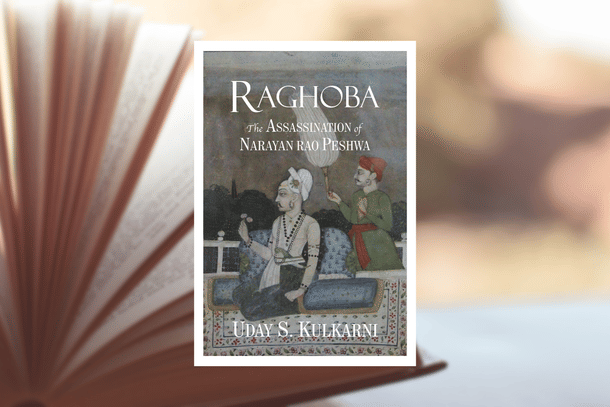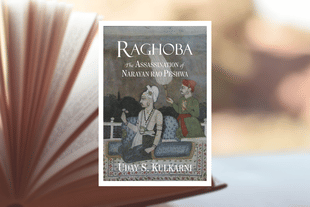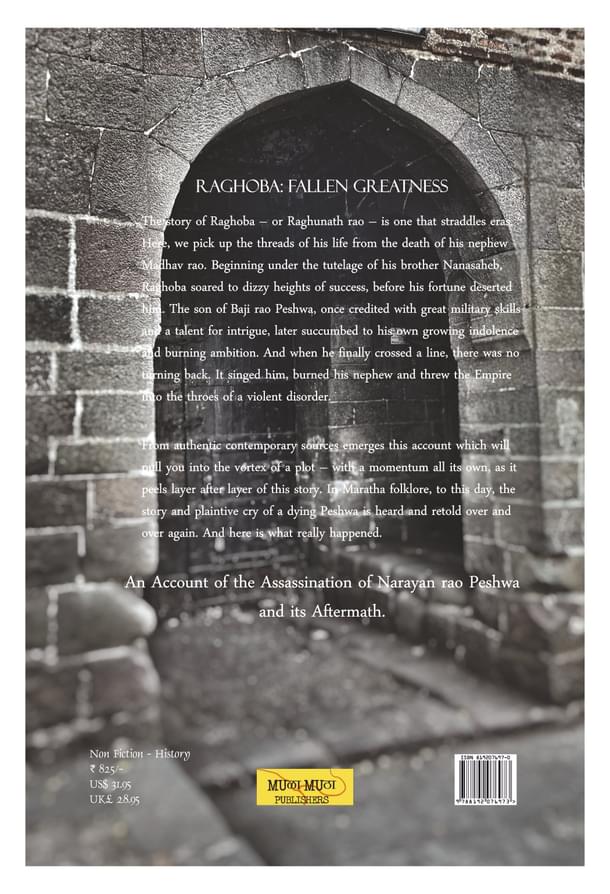Books
Power, Ambition, And Murder: 'Raghoba' Unravels Conspiracy Behind Narayan Rao Peshwa’s Assassination
Amit Paranjape
Sep 13, 2024, 01:31 PM | Updated 01:31 PM IST
Save & read from anywhere!
Bookmark stories for easy access on any device or the Swarajya app.


Raghoba: The Assassination of Narayan Rao Peshwa. Uday S Kulkarni. Mula Mutha Publishers. Pages 340. Rs 825.
The eighteenth century saw the Marathas rise to become the preeminent power in India. The Maratha Empire, at its peak during the middle of that century, stretched from 'Attock to Cuttack'... from Punjab to Thanjavur, with Pune being the de facto capital.
A setback occurred at Panipat in 1761, but a good recovery was enabled by one of the great leaders of eighteenth-century India, Madhavrao Peshwa. In a short span of 12 years, before his untimely death in 1772 (due to tuberculosis), the Marathas were back on a firm footing, having reversed many of the losses from a decade back.
However, Madhavrao’s death in 1772 soon pushed the Maratha Empire into a major crisis. As the British historian Grant Duff wrote, “The plains of Panipat were not more fatal to the Maratha Empire than the early end of this excellent prince.”
Madhavrao's younger brother, Narayanrao, succeeded him in 1772. However, their uncle Raghoba Dada (Raghunathrao Peshwa) had his own ambitions. Raghoba had had a tussle with Madhavrao as well, in the earlier decade, but Madhavrao had dealt with him deftly. The young Narayanrao lacked the skills, tact, and patience of his elder brother in dealing with the uncle, and soon a full-blown power struggle erupted.
Things moved rapidly, eventually culminating in a dark day in Maratha history: 30 August 1773 — the assassination of Narayanrao Peshwa at the hands of his own guards in the Shaniwarwada Palace.
Who was behind this conspiracy and murder? Was Raghoba fully aware of it? Did he order the assassination? Who were the actual perpetrators? Was there, in fact, an original letter ordering the assassination? Was it modified by someone? Raghoba clearly stood to benefit from the murder, but what was his eventual plan?
To understand this tumultuous period and to get answers to the many questions that have bothered so many, you will have to read Dr Uday Kulkarni's latest book, Raghoba: The Assassination of Narayan Rao Peshwa. This book is published by Mula Mutha Publishers and was launched in Pune on 1 September 2024.

This is Dr Kulkarni’s eighth book on Maratha history. Over the past 15 years, the author has been doing some amazing work in bringing detailed, well-researched, fact-based eighteenth-century Maratha history to his readers. His previous books have covered Peshwa Bajirao, Nanasaheb, and Madhavrao, as well as the Battle of Panipat (1761).
A naval surgeon who became a historian post his retirement from the Indian Navy, Dr Kulkarni has been able to uncover many new original historical documents and sources. History is often a grey area. Dr Kulkarni’s writing style presents history the way it should be ideally presented — provide all the facts, data, references, and sources to the reader, and then let them make their own conclusions.
Regular readers of Dr Kulkarni’s books will find this latest book similar in many aspects to his earlier works — the thoroughness of research, references, maps, etc — and yet will find it a bit different. This book is a bit shorter than his previous two books about Madhavrao and Nanasaheb Peshwas and moves forward quite fast and in a fairly linear fashion.
The first half of the book deals with the political assassination and the murder conspiracy. This part of the book will be quite interesting, even to those who don’t get deep into history. The Narayanrao murder and the conspiracy are discussed from multiple viewpoints and sources, some of them being published for the first time.
Throughout the book, the complex character of Raghoba is brought out very well. The roles of his ambitious wife, Anandibai, and his other supporters are also discussed in detail.
The second half of the book deals with the aftermath of the murder. While Raghoba tried to establish himself as the clear successor and as the next Peshwa, a set of senior leaders (later called the ‘Barabhai’, or ‘Twelve Brothers’) rebelled and created a counterpower centre in Pune that challenged him.
An unprecedented, odd situation resulted with this infighting, where the armies of the Barabhai were in conflict with (and later chasing) Raghoba and his forces. The various generals, regional chiefs, and friends and enemies of the Maratha Empire began aligning themselves with the two opposing sides in this conflict. The English (especially the Bombay Presidency) saw an opportunity and supported Raghoba. This caused some friction between Bombay and Calcutta.
So what did eventually happen? Were the actual murderers — the guards and conspirators — caught and punished? Did the Barabhai armies manage to catch up with and capture Raghoba? Or did he manage to escape? And did the Maratha Empire stabilise after the shocking events of 1773? For all these answers, you will have to read Dr Kulkarni’s book!
This book is a short read compared to Dr Kulkarni’s earlier books, as I mentioned earlier, and is so engrossing that you can even finish it in one or two sittings!
A Technology Entrepreneur, with many diverse interests across Information Technology, Emerging Tech, Economics, Healthcare, History, and Urban Development. He tweets @aparanjape




